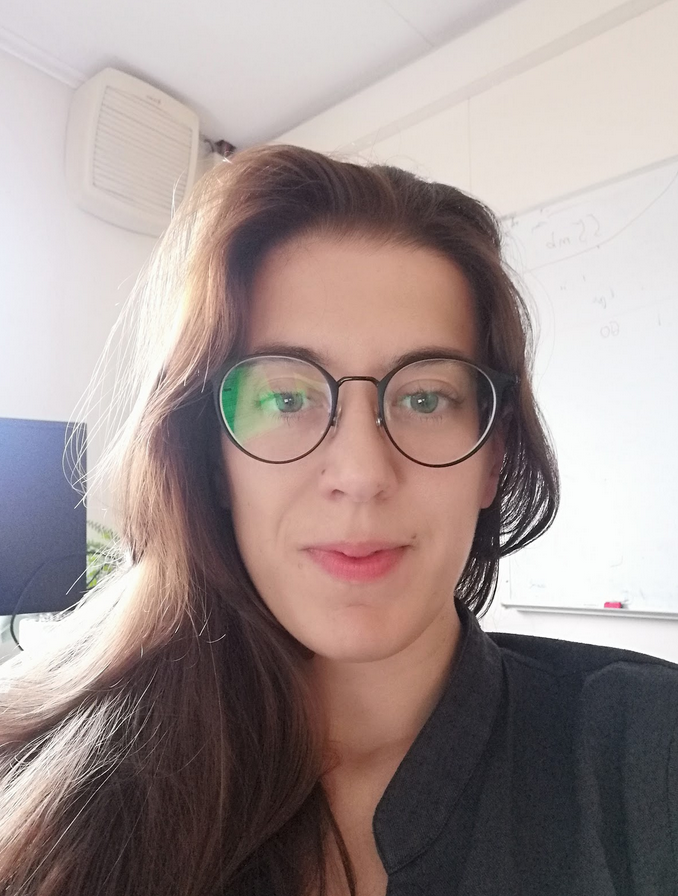
Leticia Cunqueiro has been awarded a Consolidator grant from the European Research Council (ERC) to enable her to implement her "QCDHighDensityCMS" project. For her research, Leticia will join the Leprince-Ringuet Laboratory (LLR) at Ècole Polytechniqueat in France, and will work on the CMS experiment at CERN. She will carry out in-depth research on Quantum Chromodynamics (QCD), the theory that describes the strong interaction between quarks and gluons, the fundamental particles of hadrons such as protons and neutrons. In particular she will focus on the high-temperature phase of QDC, that can be studied in heavy ion collisions.
To learn more, we asked three questions to Leticia about her project:
What is the quark-gluon plasma (QGP)?
“Heavy-ion collisions are the only laboratories on the earth where one can study the high-temperature phase of QCD: heavy atomic nuclei (such as nuclei of lead - Pb) are smashed in particle colliders and a transition happens to a strongly coupled quark-gluon plasma (QGP), which behaves according to experimental evidence, as a strongly coupled, almost perfect liquid. A strongly coupled liquid is an example of a type of matter that arises in other areas of physics including condensed matter or cold atom physics. QGP is not a classical plasma such as the Sun and techniques to probe QGP are trickier.”
What is QCDHighDensityCMS project?
“This project focuses on using jet (several bunches of hadrons form a spray of particles as a result of quark or gluon decay after a high energy collision) and jet substructure techniques. It aims to access the microscopic structure, the inner workings of the QGP, by probing it at shorter and shorter length scales at which the free quarks and gluon degrees of freedom should emerge. Essentially, by using jets and their internal structure, we aim to better understand Quantum Chromodynamics theory at its limits and the properties of the QGP.
- For more detail -
“In detail my project plans to exploit recent techniques (like iterative declustering, the Lund plane and grooming of jets) to access certain regions of the jet branching process to isolate the QGP-induced signal.
I’ll be looking for an excess of large-angle jet emissions in Pb-Pb relative to pp collisions as a signature of the interaction of the jet and its constituents with free quarks and gluons in the plasma. Very much in the spirit of the Rutherford experiment that confirmed the internal structure of the atom by detecting large-angle deflections of the alpha-particles.
Other elements of my project are quantum coherence effects: what is the minimum angular separation between two jet prongs to be seen independently by the QGP? What is the role of the heavy-quark mass when the jet traverses the QGP?
And finally, can we time-scan the QGP using hadronic decays of boosted heavy particles?”
Why is it so important to learn more?
“Quantum Chromodynamics is the only non-abelian Quantum Field Theory whose high-temperature phase can be experimentally studied in the laboratory, in heavy-ion collisions, allowing us to investigate how the macroscopic, collective properties of matter arise from QCD interactions.”
More about Leticia:
Leticia Cunqueiro is a researcher at Oak Ridge National Laboratory (US) and works for the ALICE Collaboration, based at CERN. She is deputy physics coordinator of that experiment. Her main interest is jet physics, both in pp and Pb-Pb collisions. Besides physics, she enjoys literature, cinema, writing short stories (she has recently published “The beach” at Grial magazine) and horse riding.
The views expressed in CMS blogs are personal views of the author and do not necessarily represent official views of the CMS collaboration.
